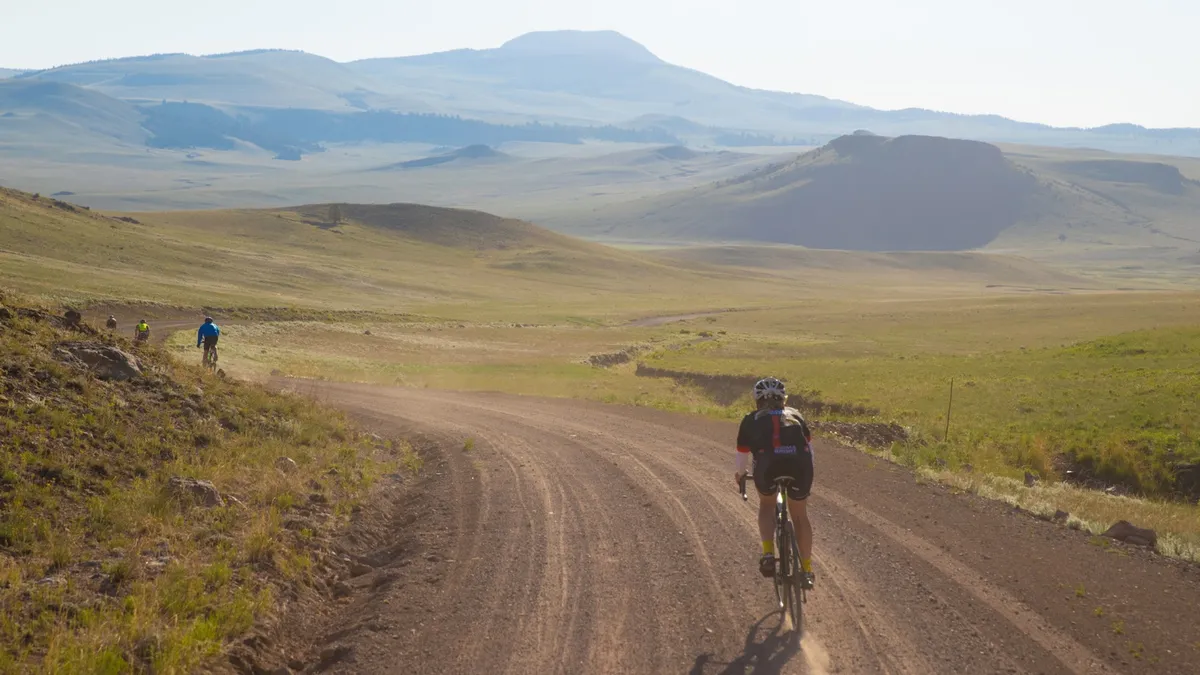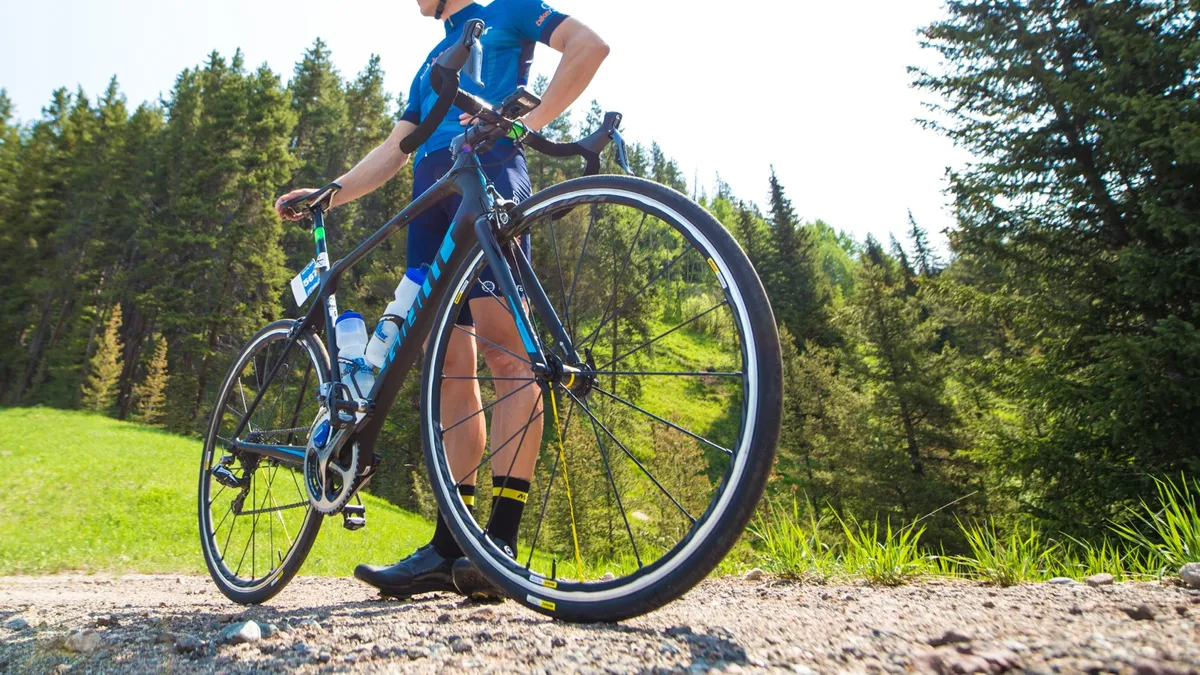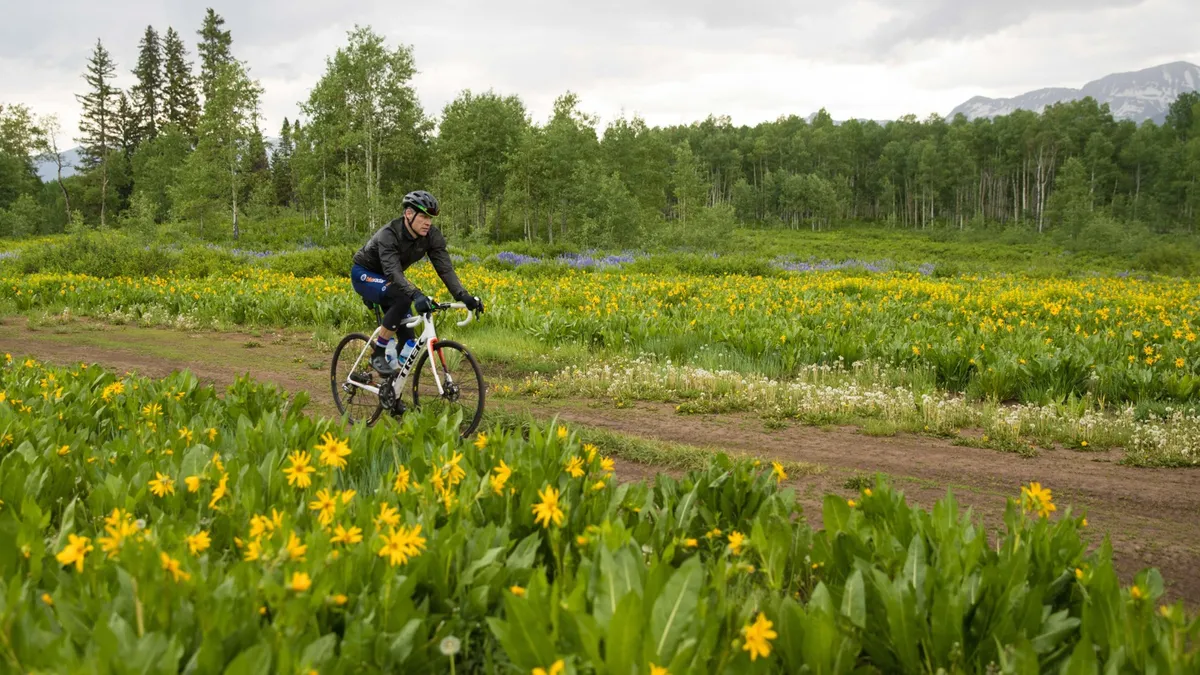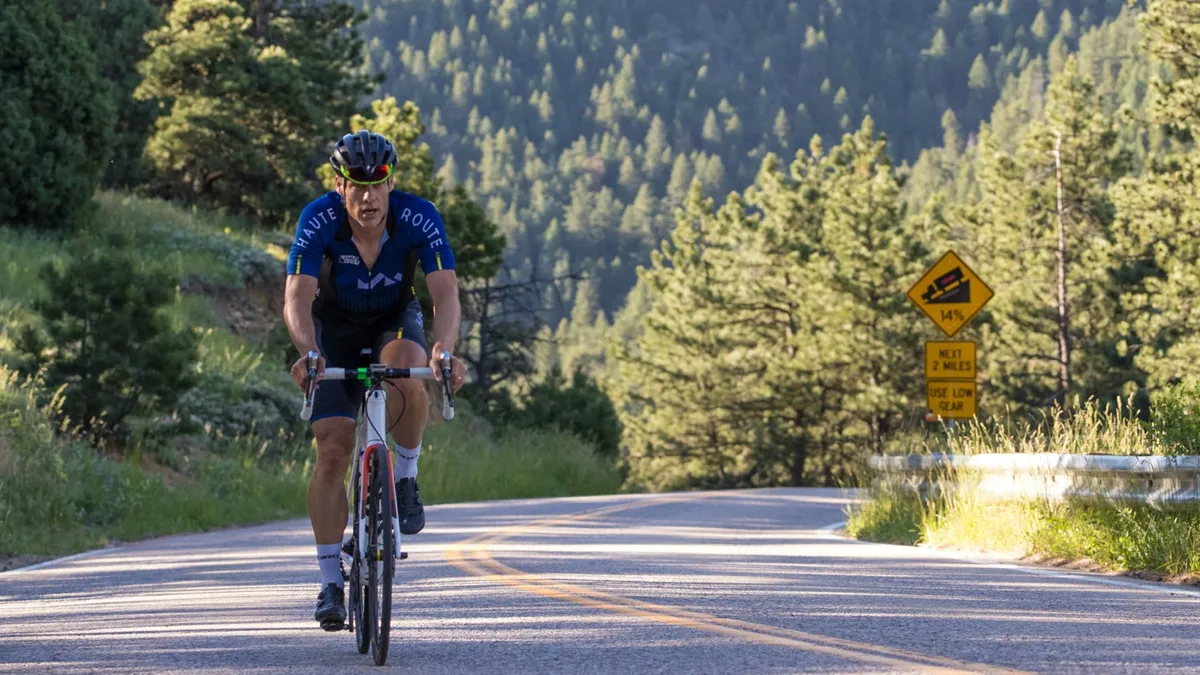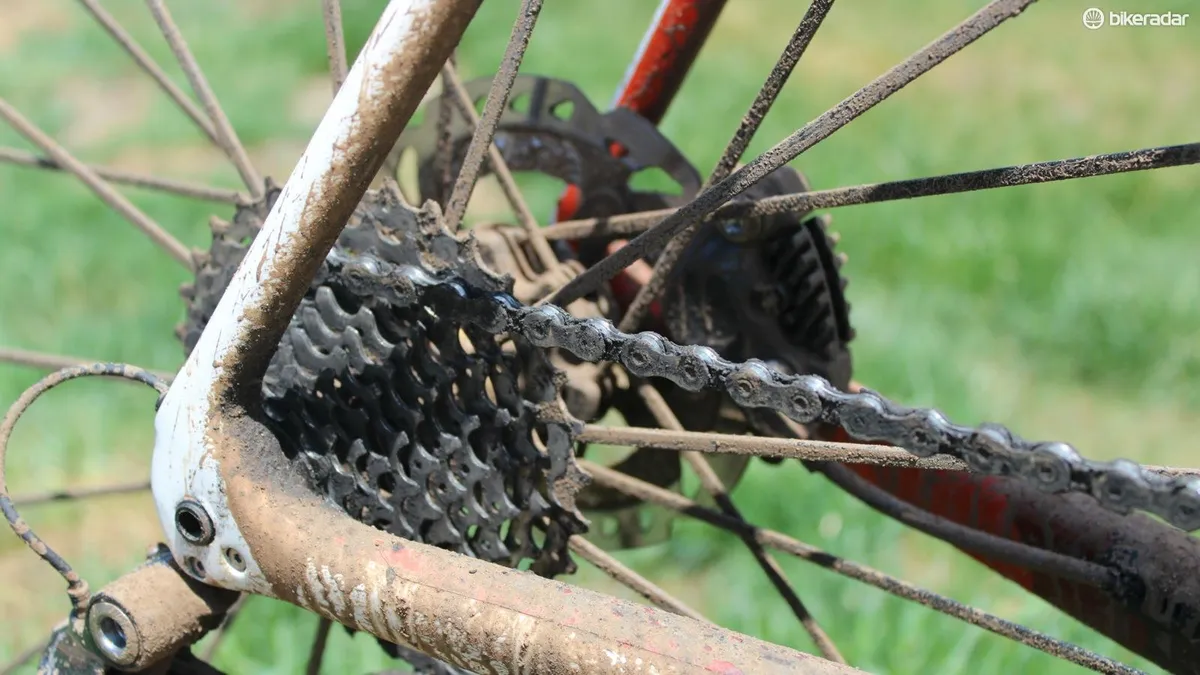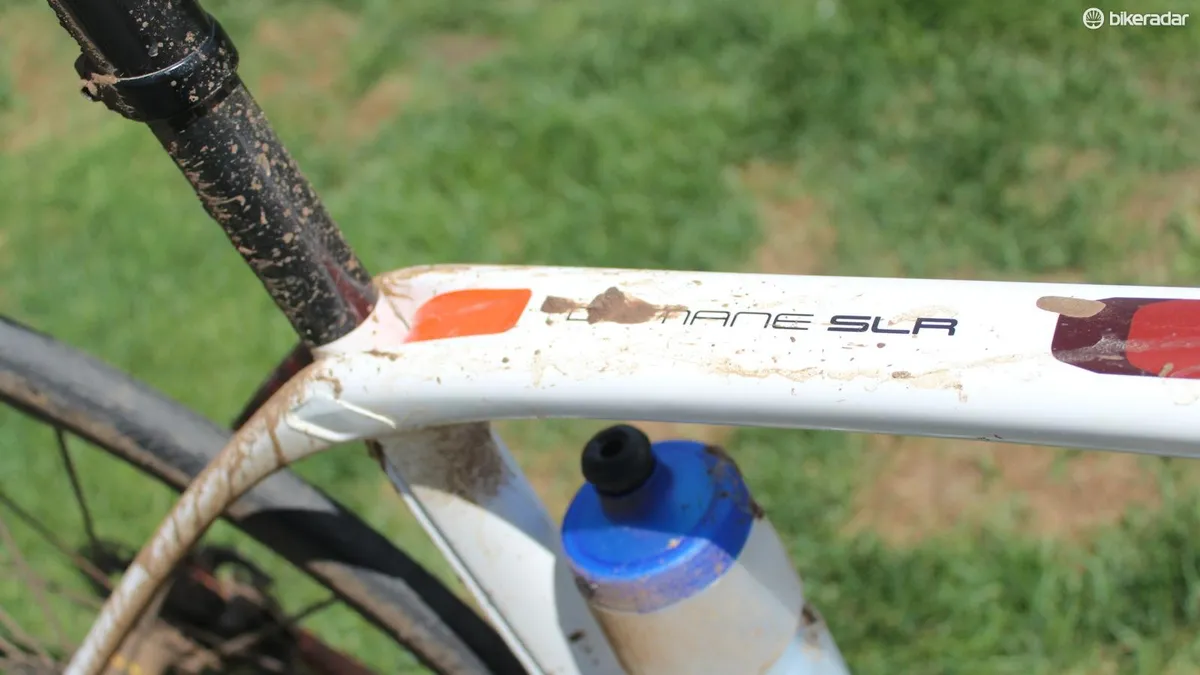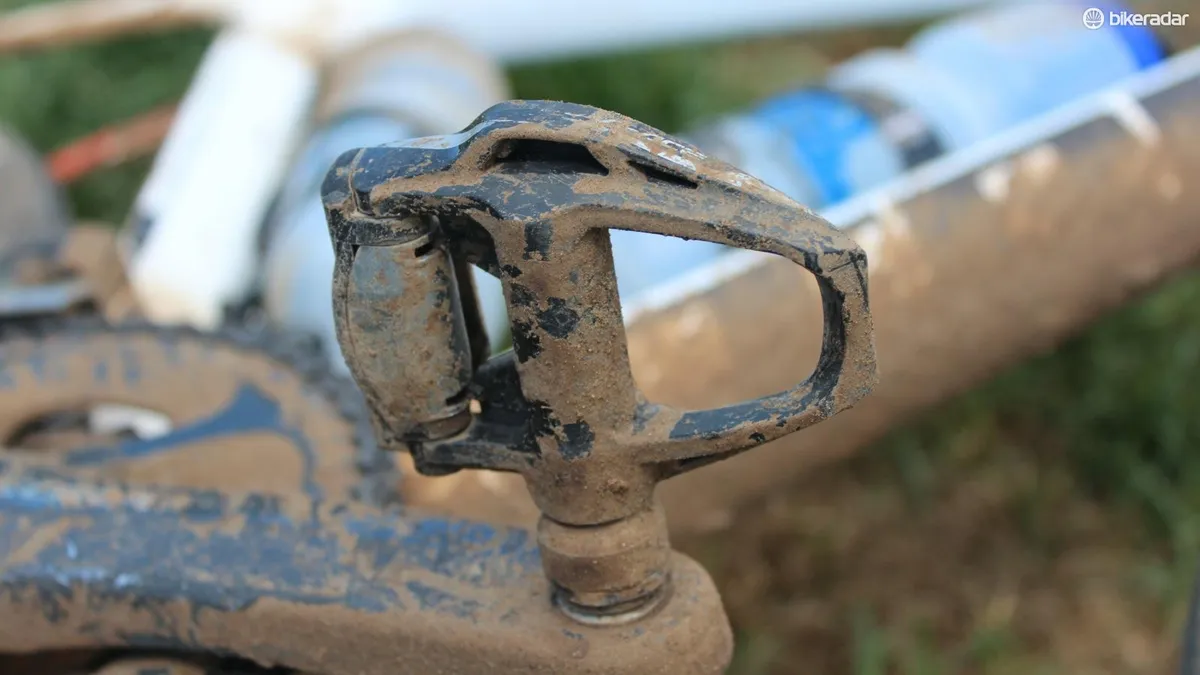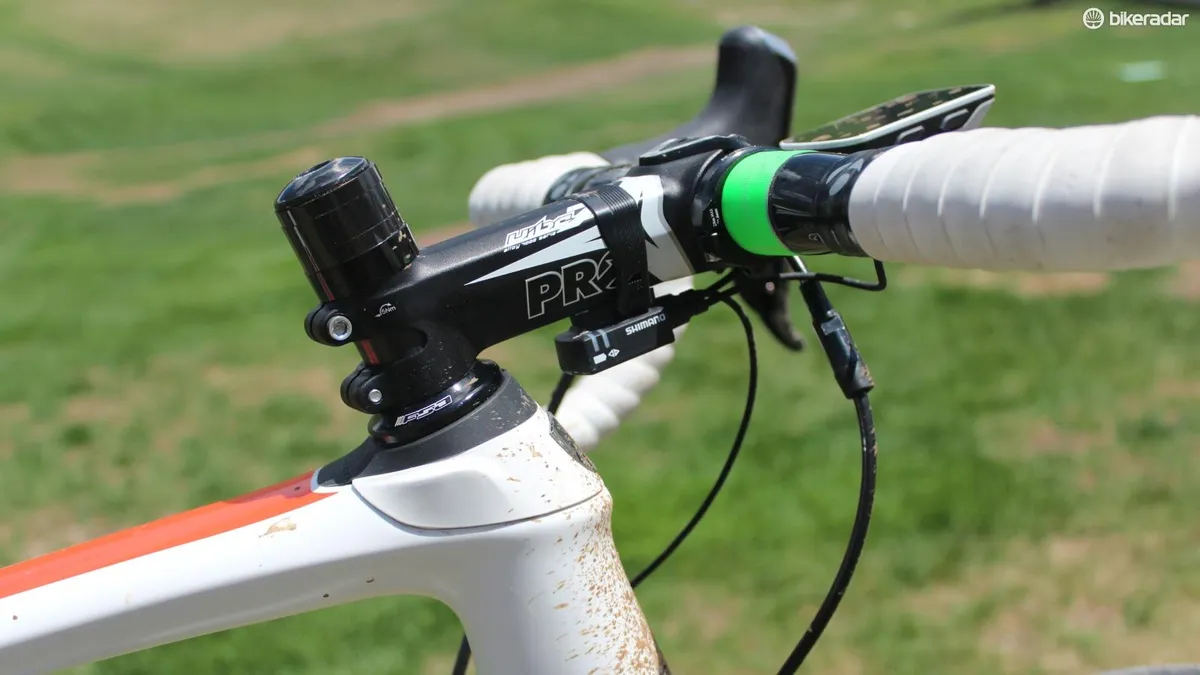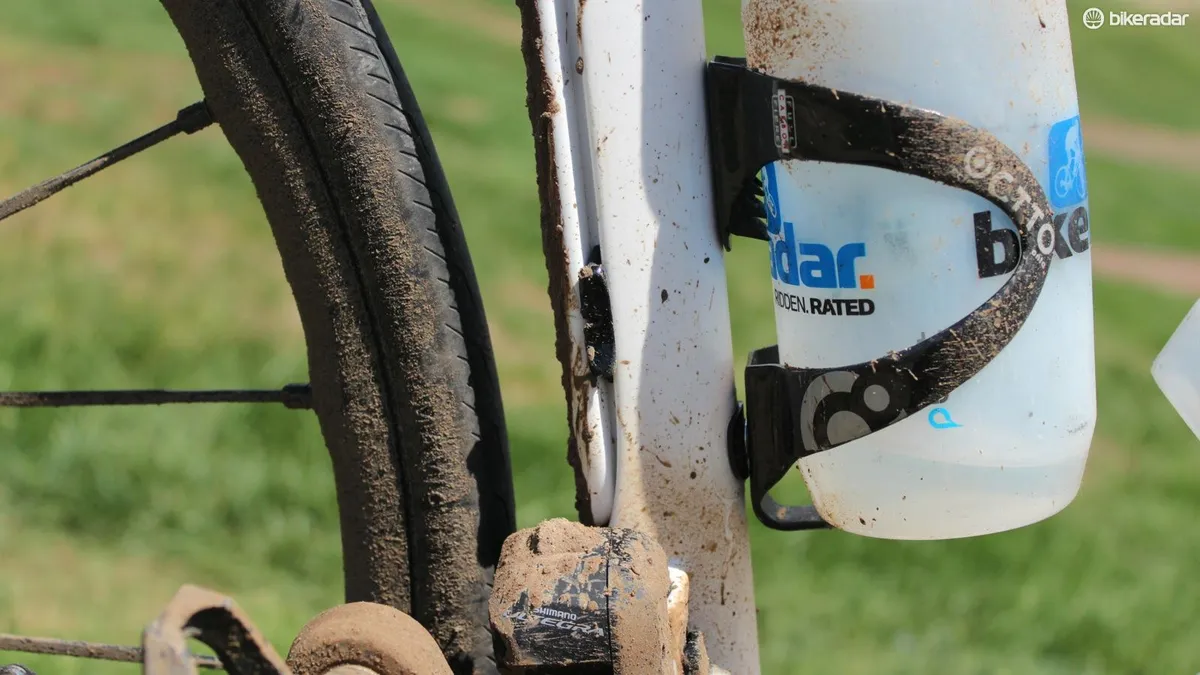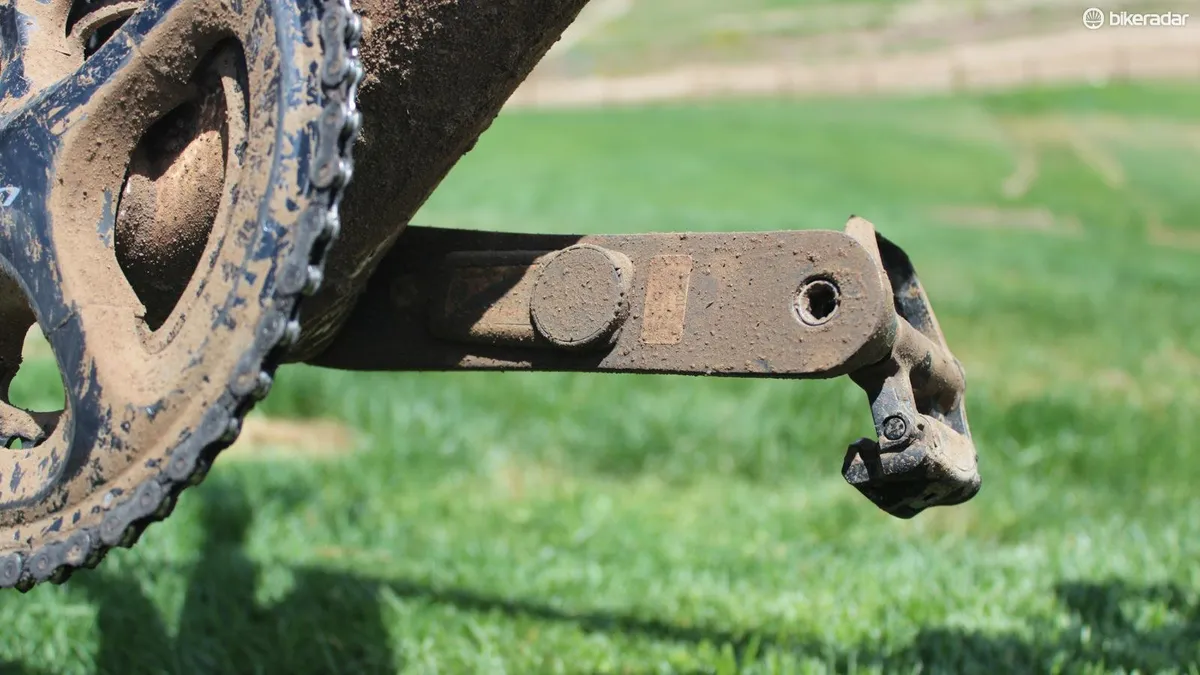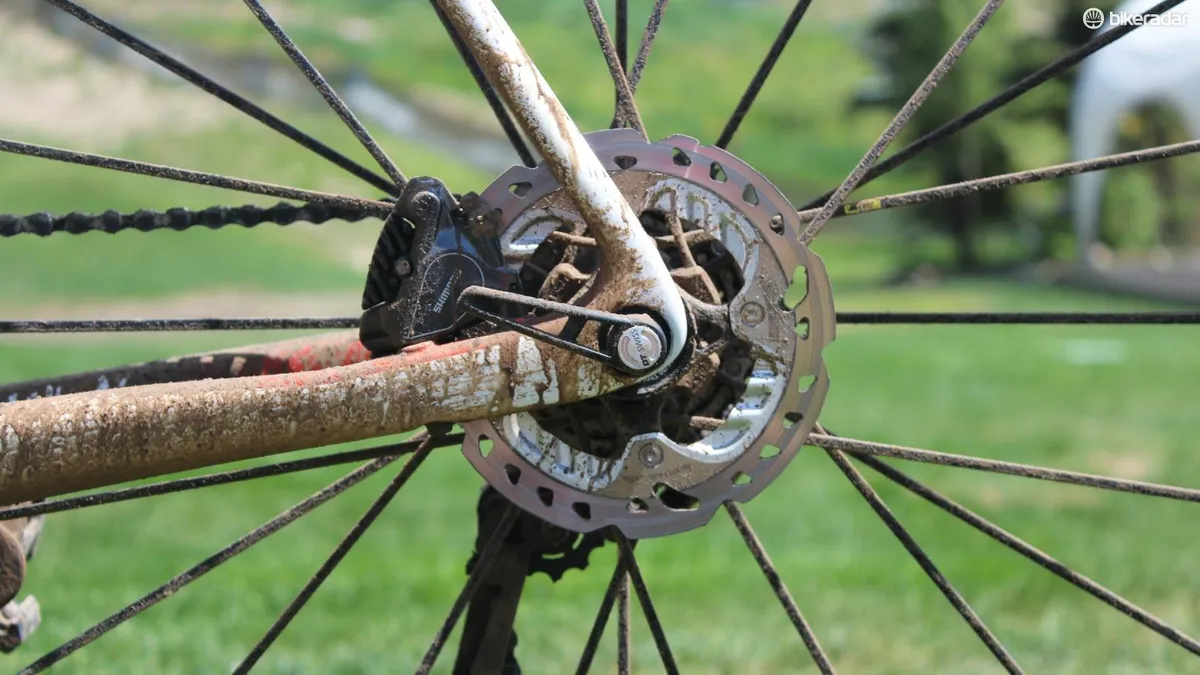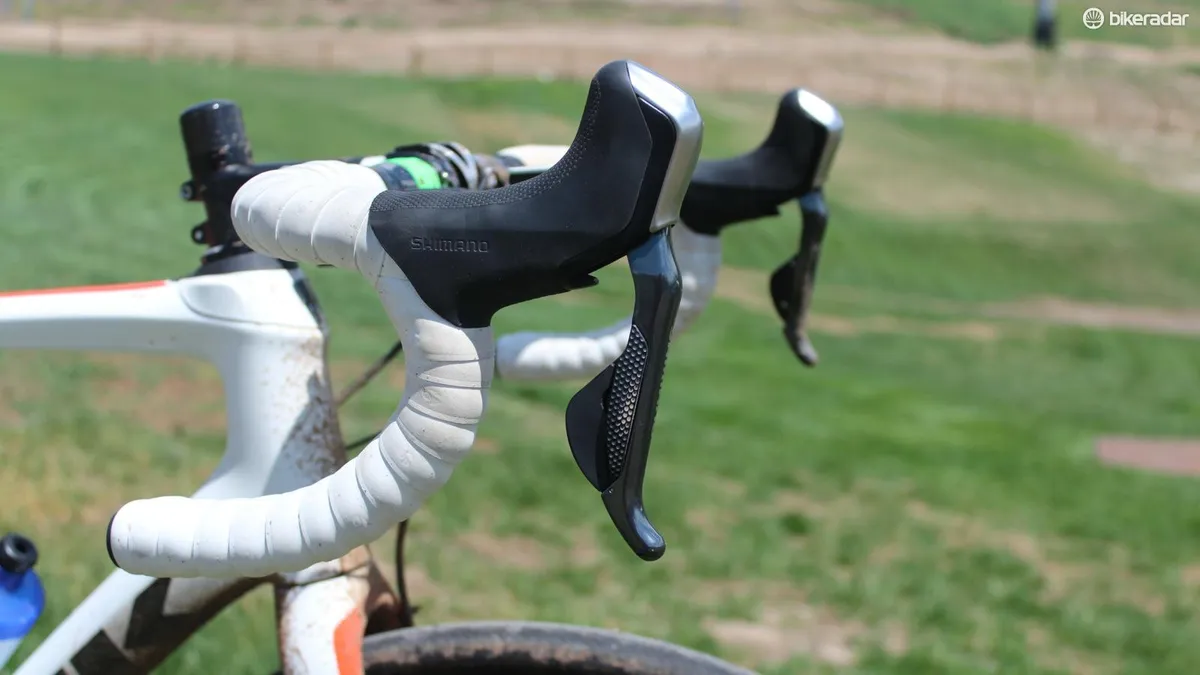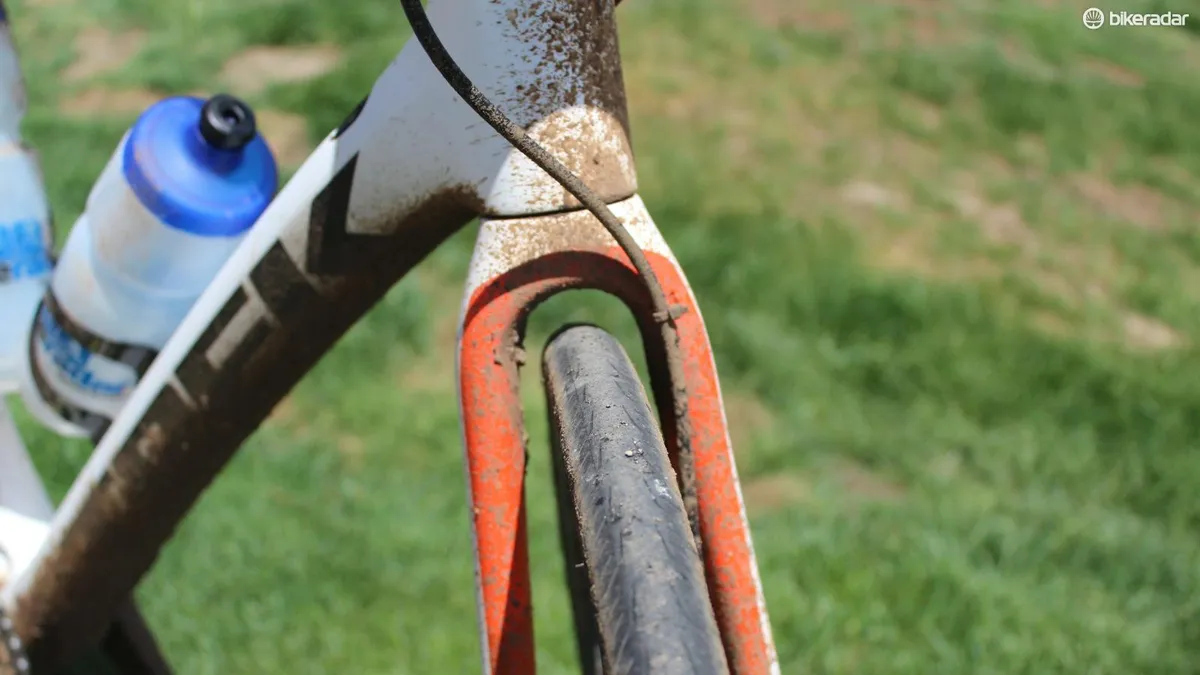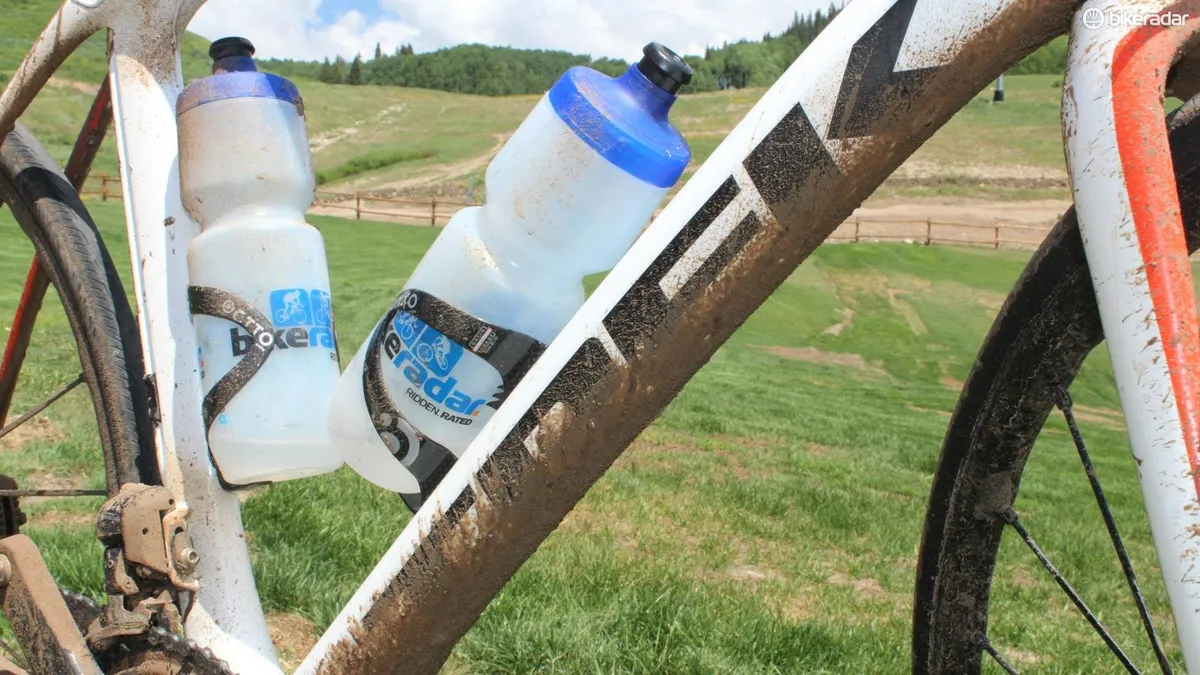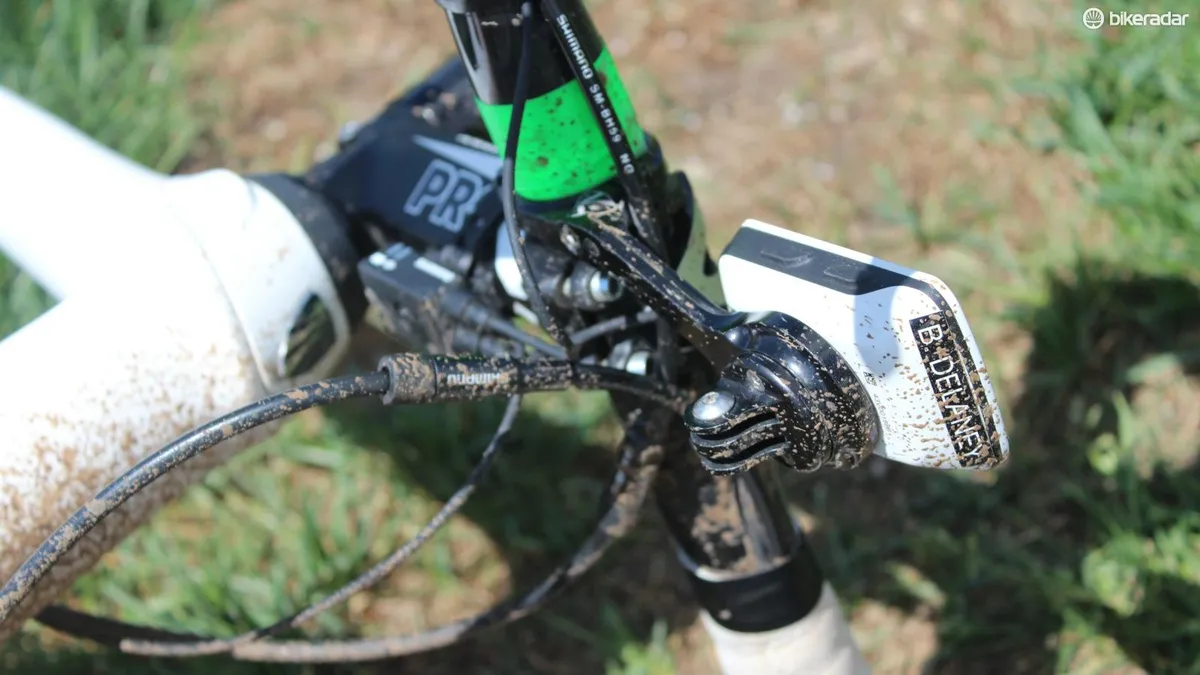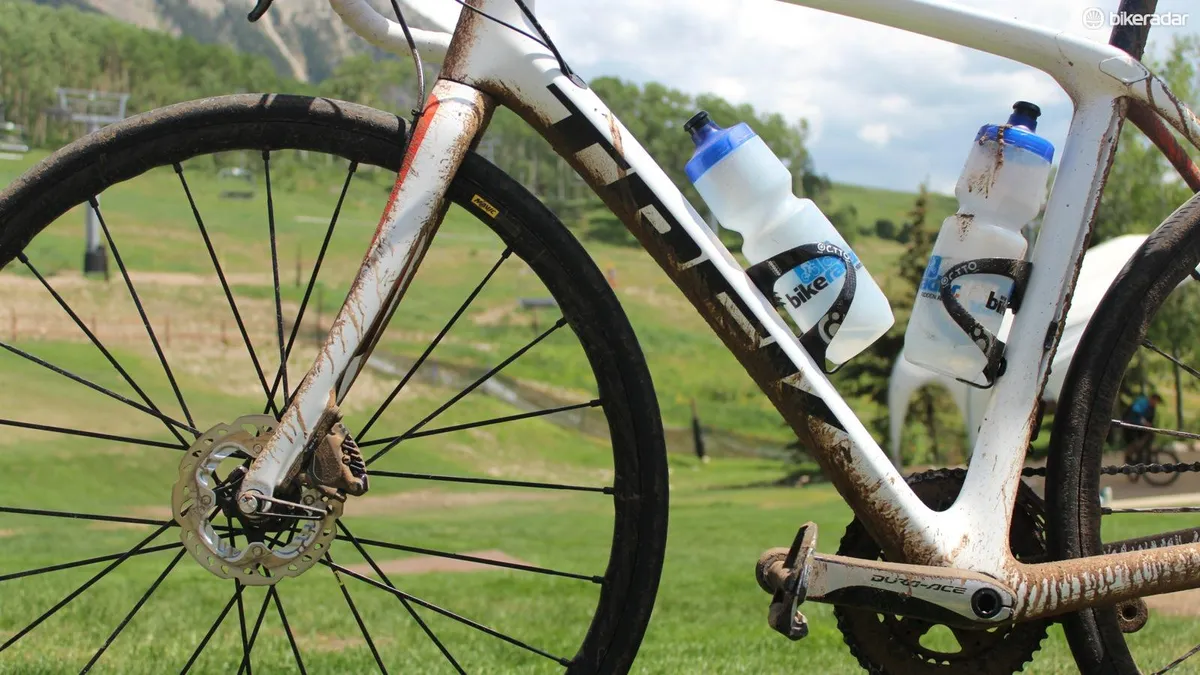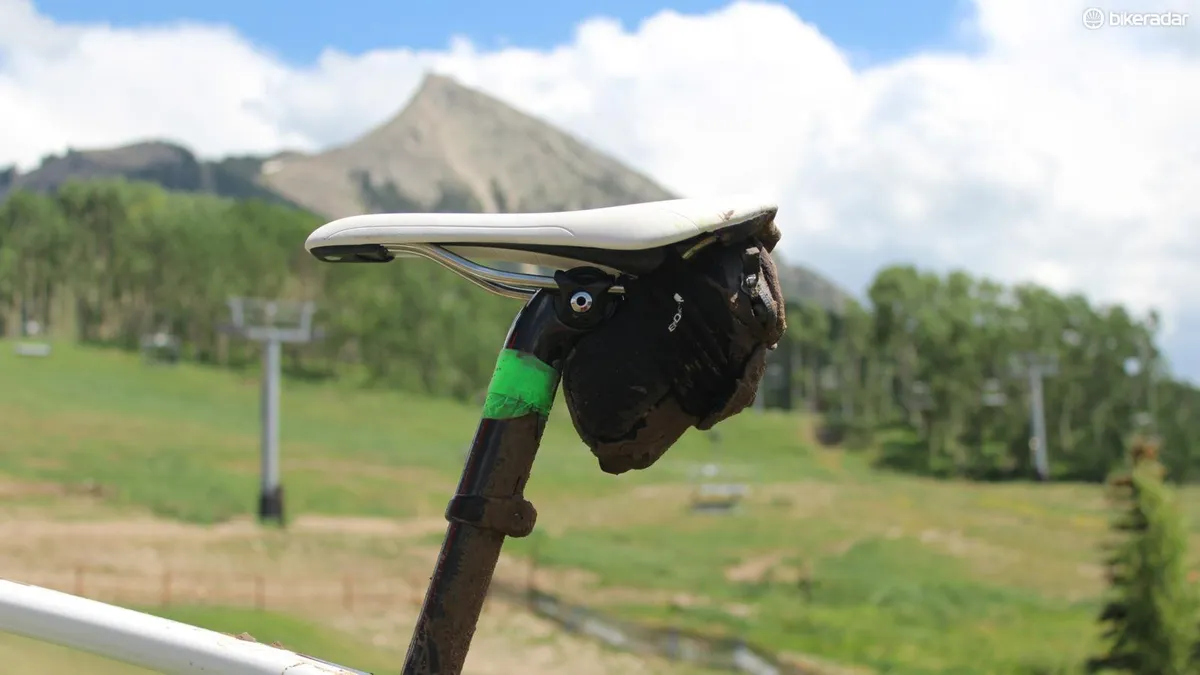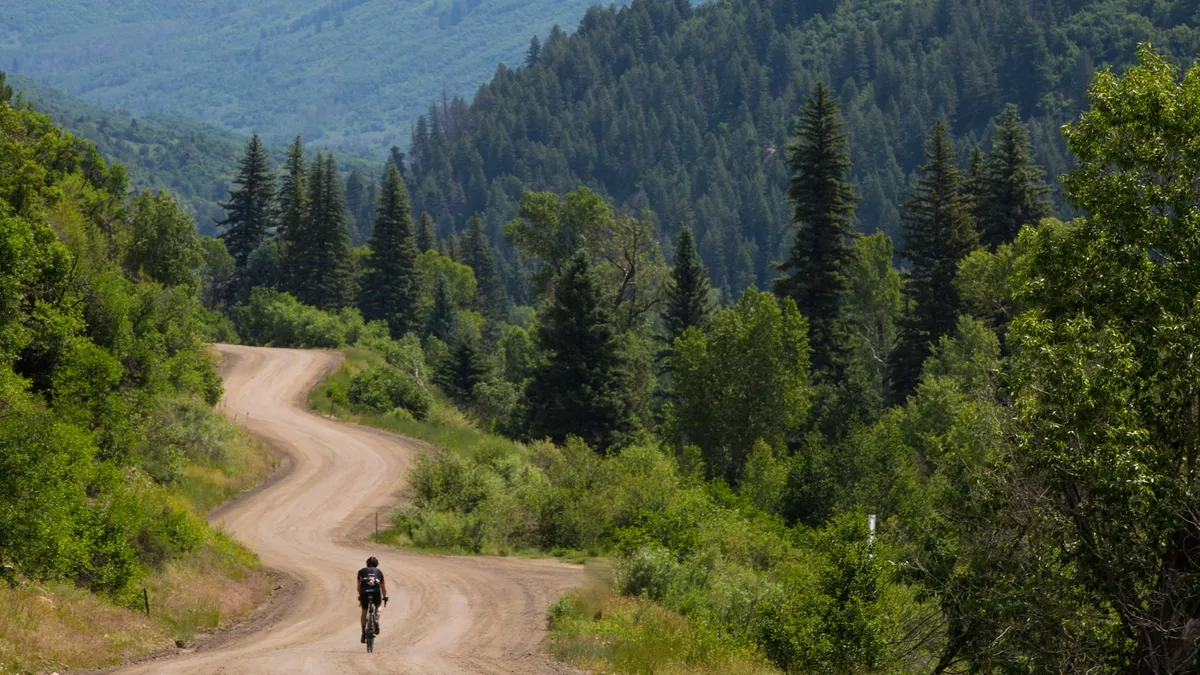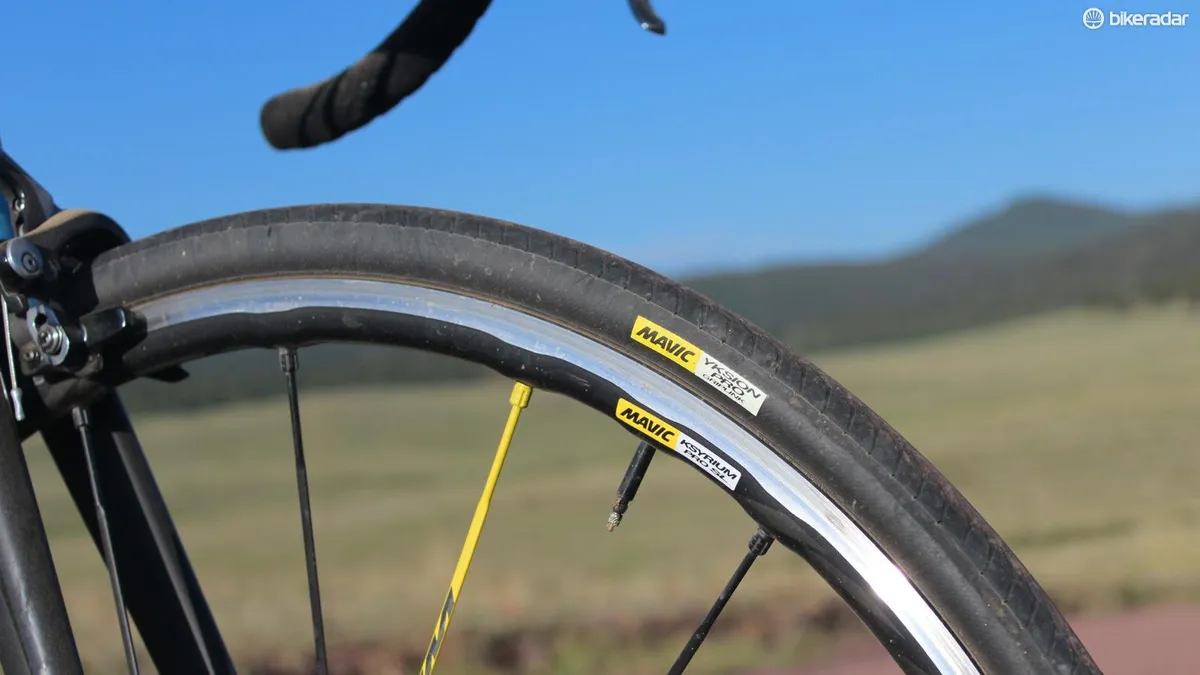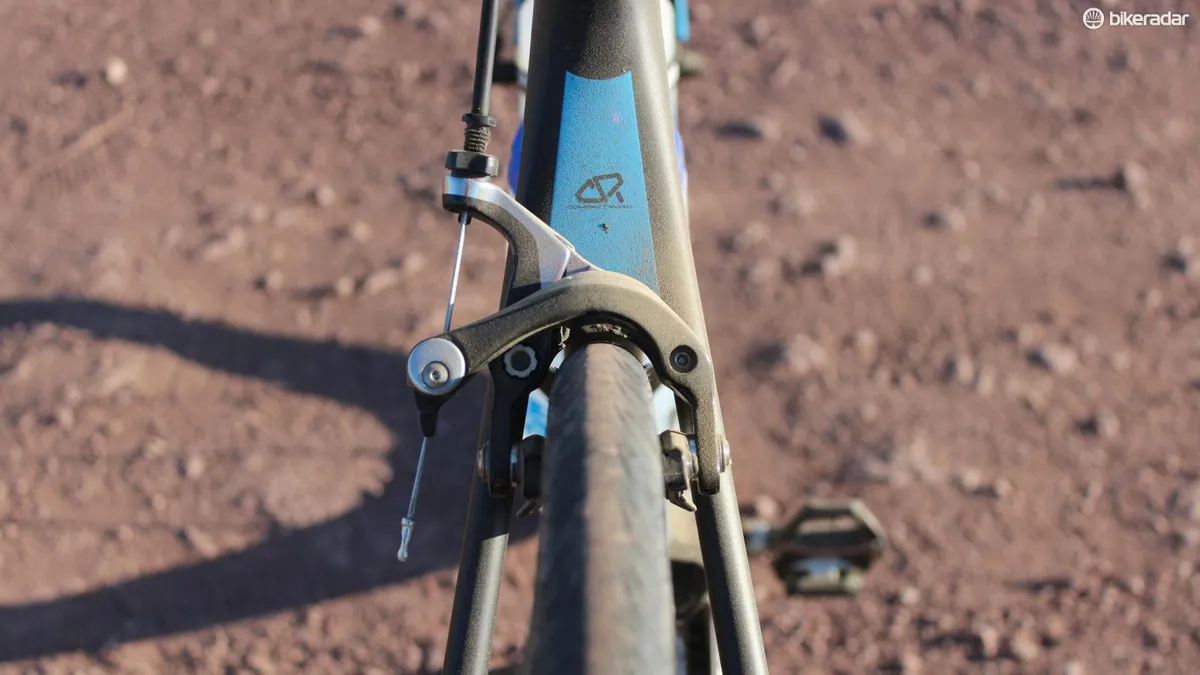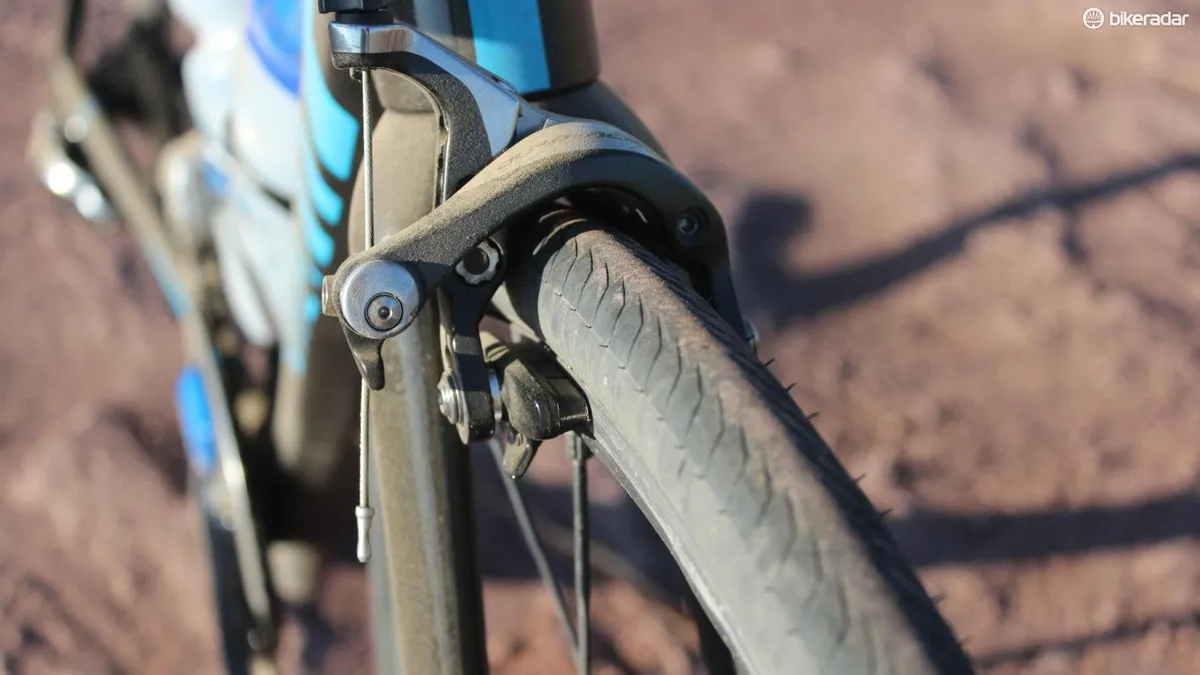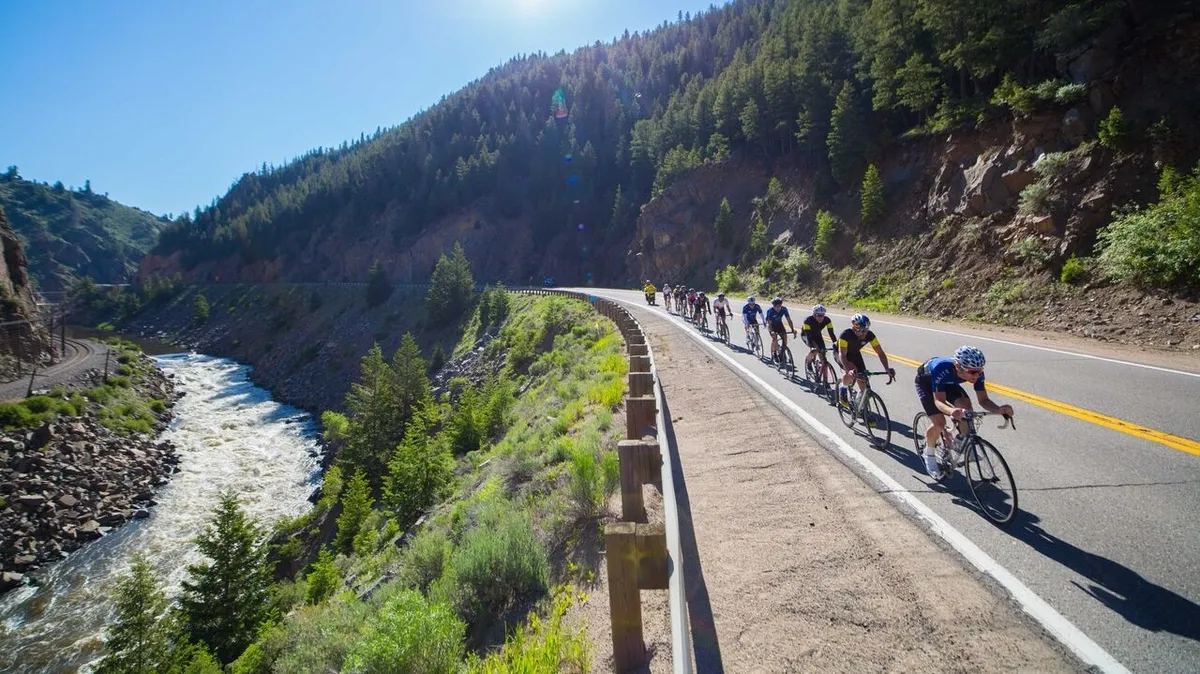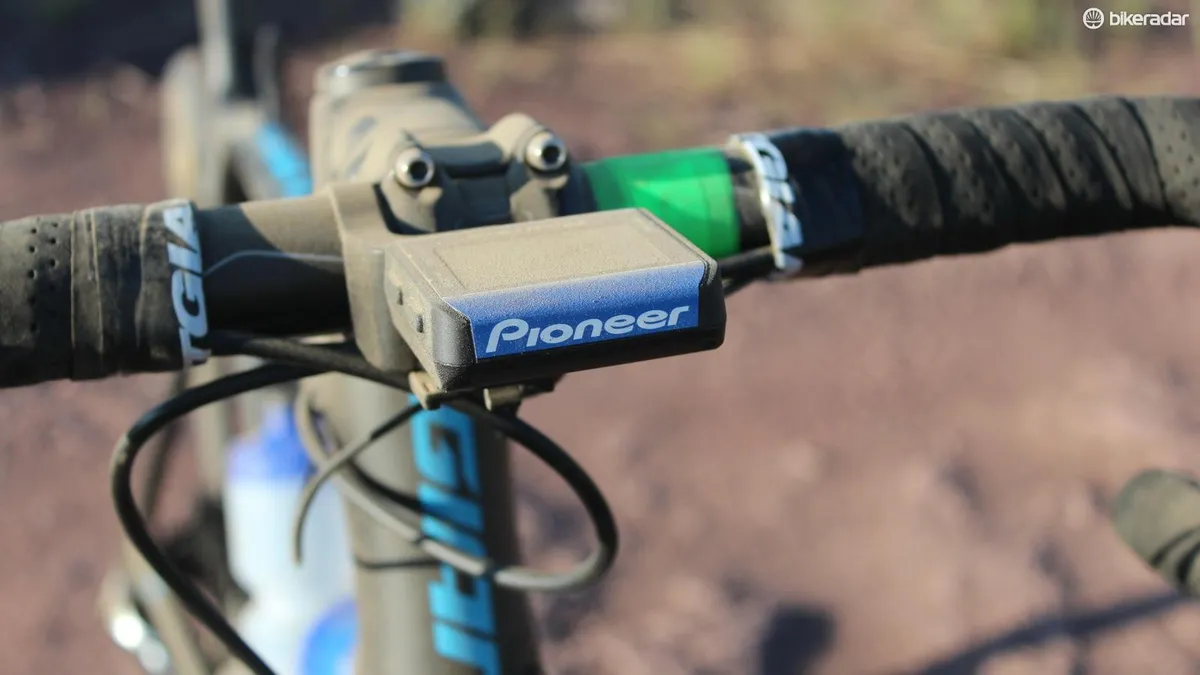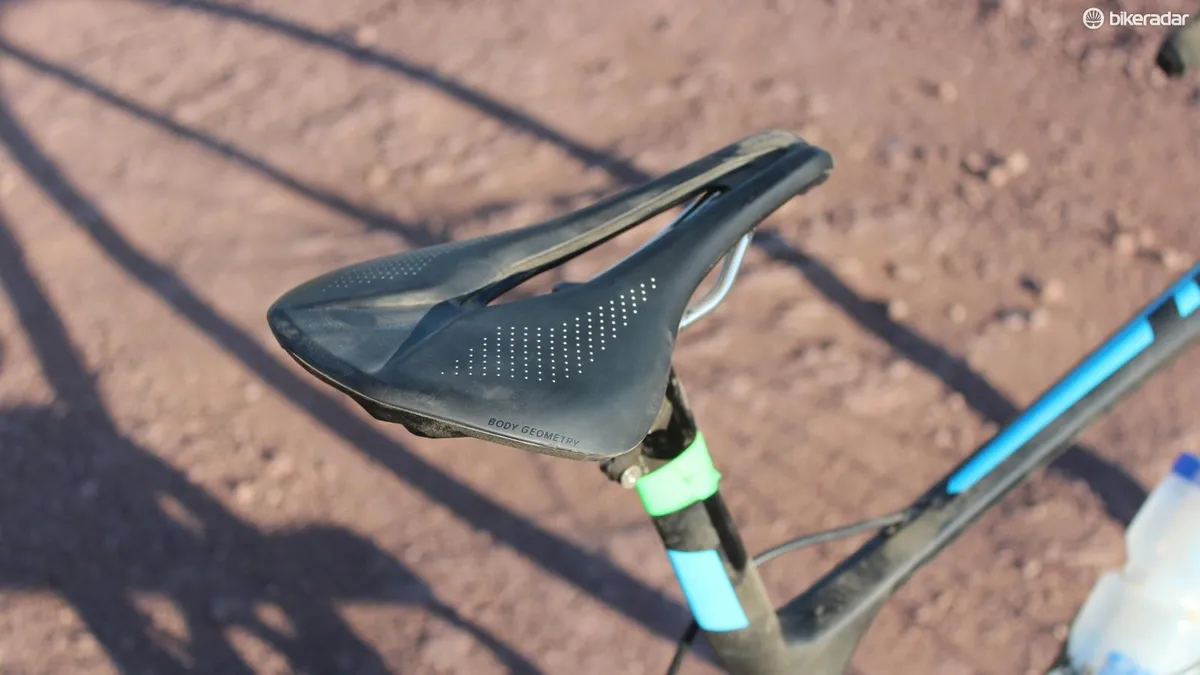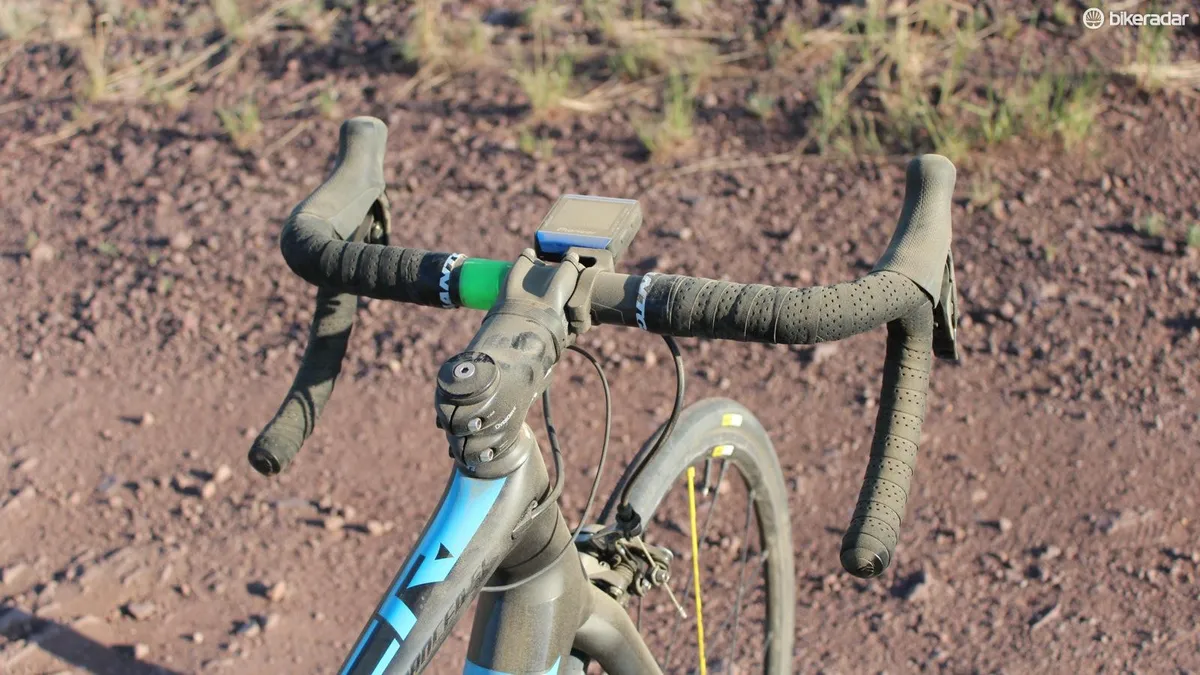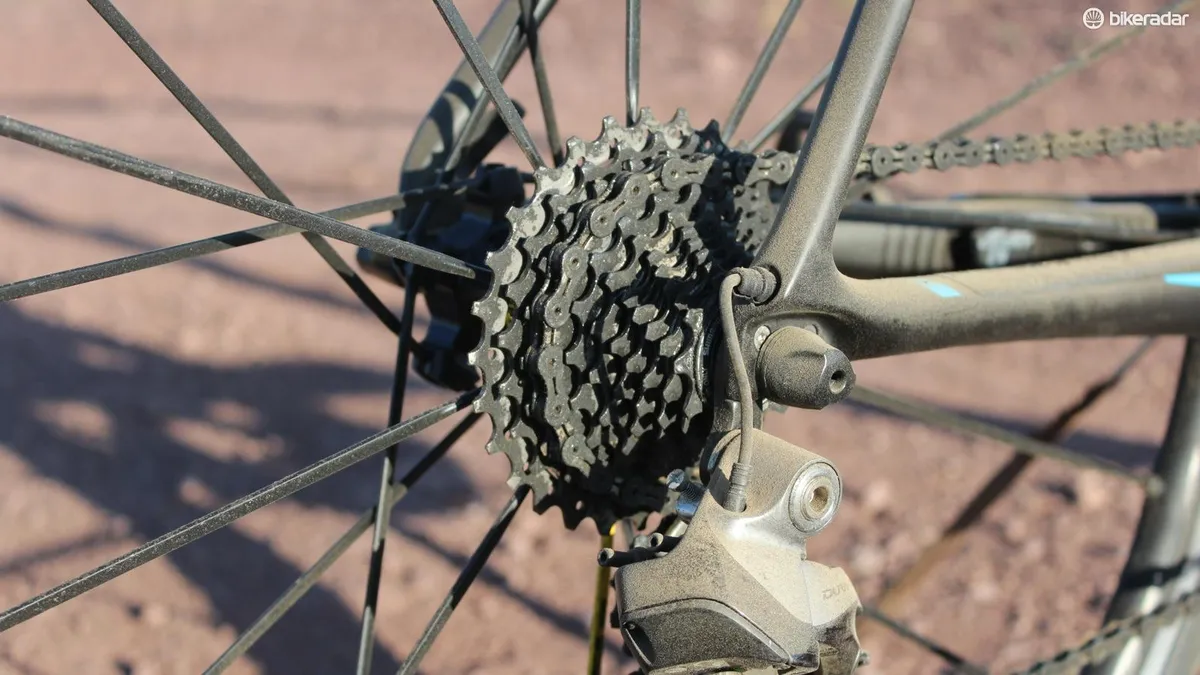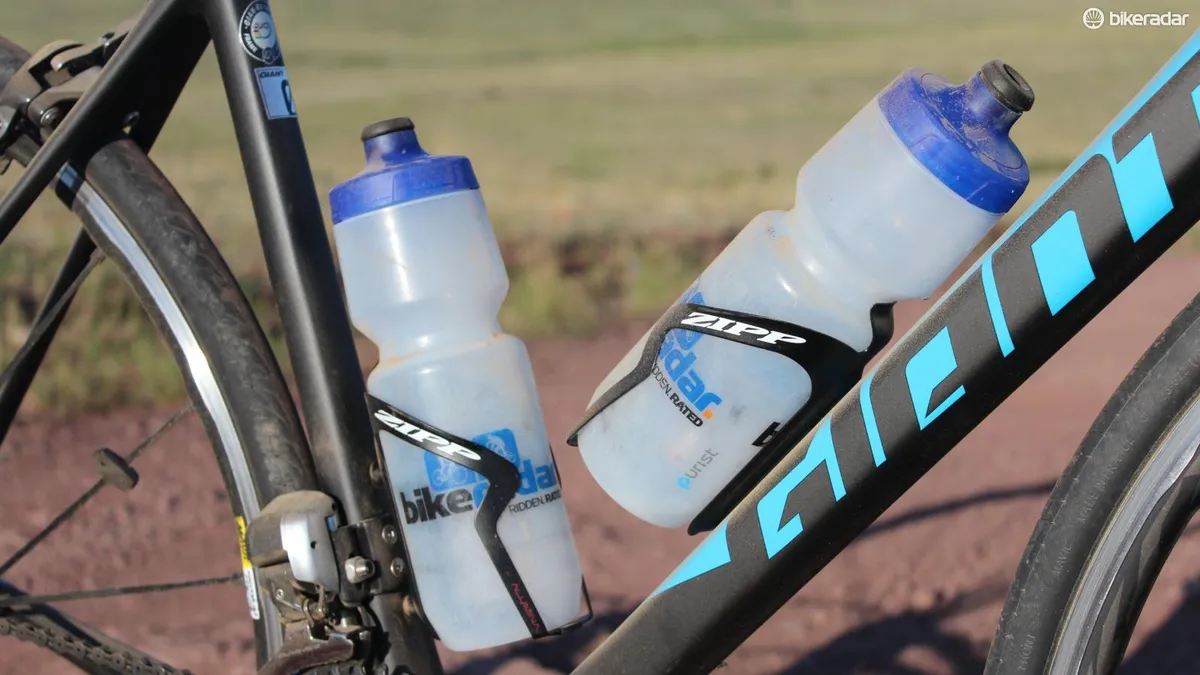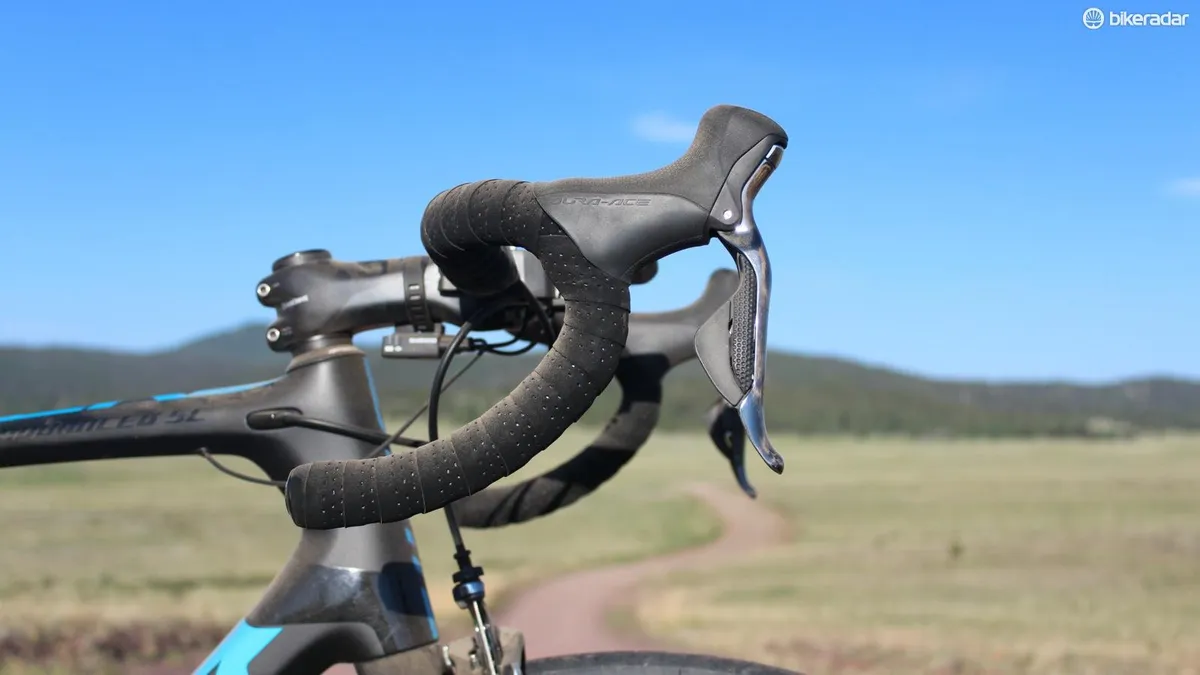Staring down the barrel of the Mavic Haute Route Rockies seven-day test event, I wondered whether to bring a superlight race bike for the 52,500ft / 16,000m of elevation gain or a plush endurance bike with fat tires, disc brakes and low gears for the substantial amounts of dirt roads and steep climbs. I punted, and brought both.
- Giant adds thru-axles and tubeless to TCR Advanced line
- How Trek just revolutionized road bike design
- Mavic Haute Route Rockies announced
As Haute Route prepares to launch its first mega-fondo in the United States — and its first event featuring many miles of dirt roads — its parent company OC Sport invited a few journalists, ex-pros and VIPs to ride reconnaissance on the route while they tested the sizeable logistics involved in guiding 600 amateur riders through the mountains of Colorado.
Like many Colorado cyclists, I ride dirt roads quite a bit, with the low-traffic and quiet as much of a draw as the engaging surface itself. I usually just ride a normal race bike with 25mm clinchers, as my rides will usually be 80% road, 20% dirt, and the dirt is fairly tame.
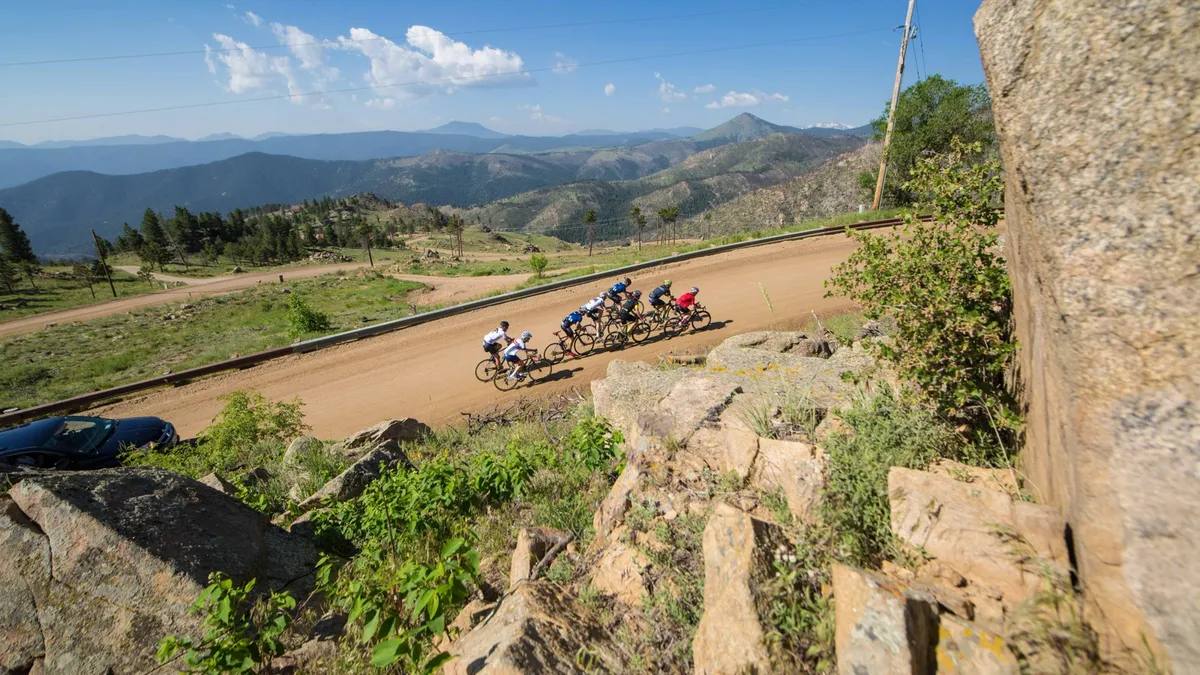
For the Mavic Haute Route Rockies, I brought two bikes that bookend the wide spectrum of what a road bike looks like these days.
The Giant TCR Advanced SL 0 is a 13.9lb flyweight climber, with carbon clinchers shod in 23mm clinchers and Shimano Dura-Ace Di2 52/36 in its stock configuration.
The Trek Domane SLR Disc is basically a full-suspension road bike, with IsoSpeed Decouplers offering front and rear flex like nothing else on the market, and gargantuan 32mm clinchers sealing the plush deal. The Domane excels at gliding over rough roads, but honestly the real hook for me was the 34-32 granny gear.
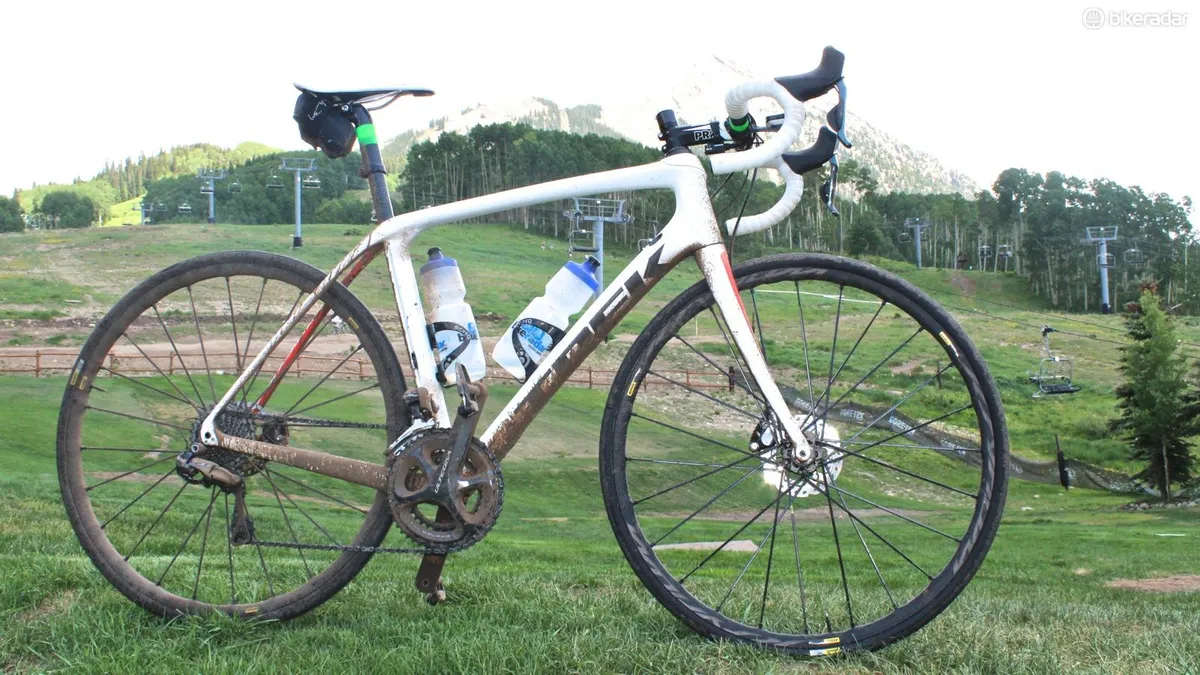
As Mavic provided support for the entire week, we were asked to use their wheels and 28mm tires. This neutralized the 23mm vs 32mm comparison.
I put power meters on both bikes because I’m a nerd. And I put a Specialized Power saddle on the Giant because its skinny perch didn’t agree with me. Otherwise the bikes were stock.
- The course: Six 100mi stages, each with 8,000ft gain and often 15% dirt, one 11mi uphill time trial
- The horses: Giant TCR Advanced SL 0 (rim brakes) with Shimano Dura-Ace Di2 52/36 and 11-28, Mavic Kysrium SL wheels; Trek Domane SLR Disc with Shimano Ultegra Di2 50/34 and 11-32, Mavic AllRoad Pro wheels; both with Mavic 28mm tires
- The equipment goals: Comfort, efficiency and control for long climbs, fast descents and dirt roads

Di2 about 2 DiE
While I hoped the week would answer my question of which bike to bring, I neglected to anticipate other questions. Such as, what is dumber than bringing one Di2 bike to a weeklong event with a nearly dead battery? Answer: bringing two such bikes.
I rode the first stage on the Giant, being familiar with the half-paved, half-dirt climb up Sunshine from Boulder at 5,280ft to the Peak to Peak Highway at well over 8,000ft. Most of my compatriots were on either sub-compact (52/36) or compact cranks (50/34) with the now-standard 11-28 on the back. The low 36/28 was perfectly adequate for the day, although some dirt switchbacks on Sunshine are a chore with any gear. After a long, fun descent, we rambled back into Boulder on dirt backroads.
On the Giant, I used a Pioneer power meter and its corresponding CycloMeter computer, a tidy unit that is easy to configure while riding with its touchscreen menus. (Want to see a different field? Just press and hold a given metric and then change it.)
The Pioneer’s primary claim to fame is its power vector graphics, which show the amount and direction of force applied to each crank at 12 points in the rotation. Pioneer also has a unique efficiency metric that measures the force in all directions and divides it by the positive force that propels the bike forward. What do you do with this? Beats me. I do appreciate the true left/right measurement, though, which showed a bigger differential after a few days. And I also like the automatic post-ride wifi upload and the fact that you can split the meter into two, single-sided ANT+ power meters for use on two bikes.
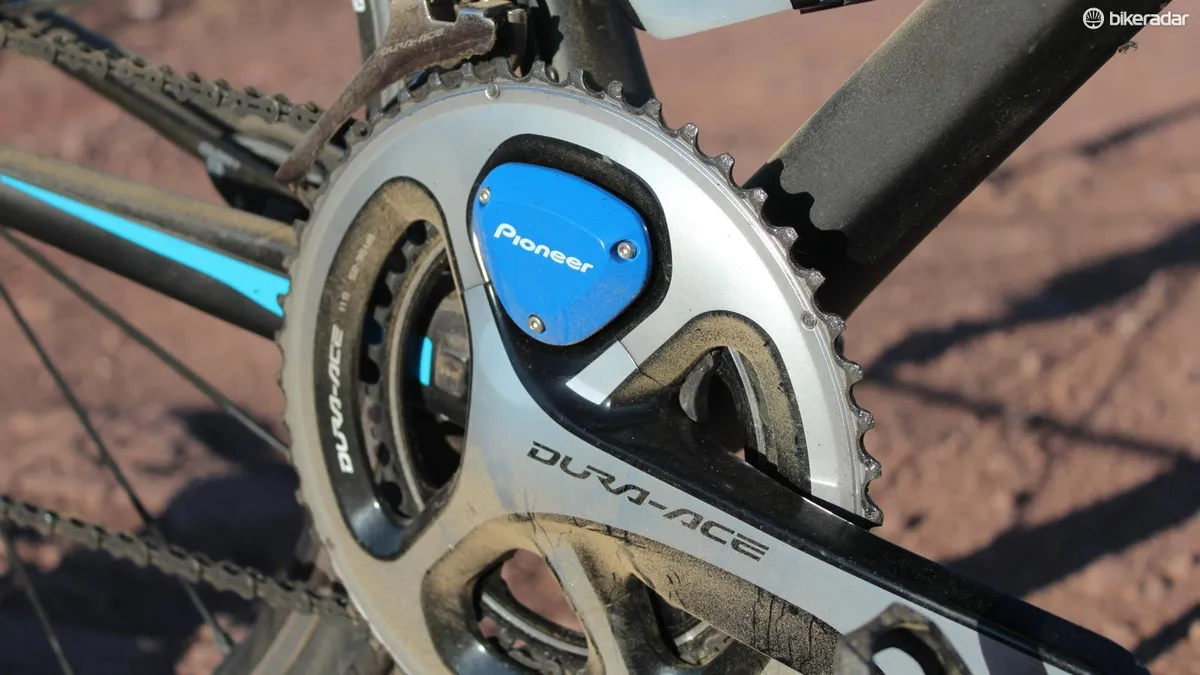
The second stage took us up Magnolia, a climb that I truly hate with its extreme pitches over 20% and extended stretches at over 10%. In my 13 years of living in Boulder, I had ridden up this horrible thing exactly once on a road bike, at which point I swore never again. Enter the Domane with its blessed 34-32 low gear. Even with a near one-to-one ratio, I still watched my skinnier riding partners propel away from my 185lb carcass as I lumbered up this beast.
As the climb turned to dirt, the Domane floated across the surface. What’s more, the 28mm Mavic tires had heaps of clearance — which couldn’t be said for a few of my riding mates’ bikes, such as a Cannondale SuperSix EVO with rim calipers that forced a change to 25mm tires.
At the first of many well-stocked refreshment stages, I went to shift into the big ring and nothing happened. Classic. Nearly dead battery. And only 65 miles and 7,000 vertical feet to go. As luck and my 185lbs would have it, the road was almost always tilted, so I could climb at a normal cadence in the small ring or tuck for the descents. At first I started counting rear shifts (‘How many did Shimano say you could do again after the front went out? 100? 200?’), but then I just focused on enjoying the ride and the taunts of my companions.
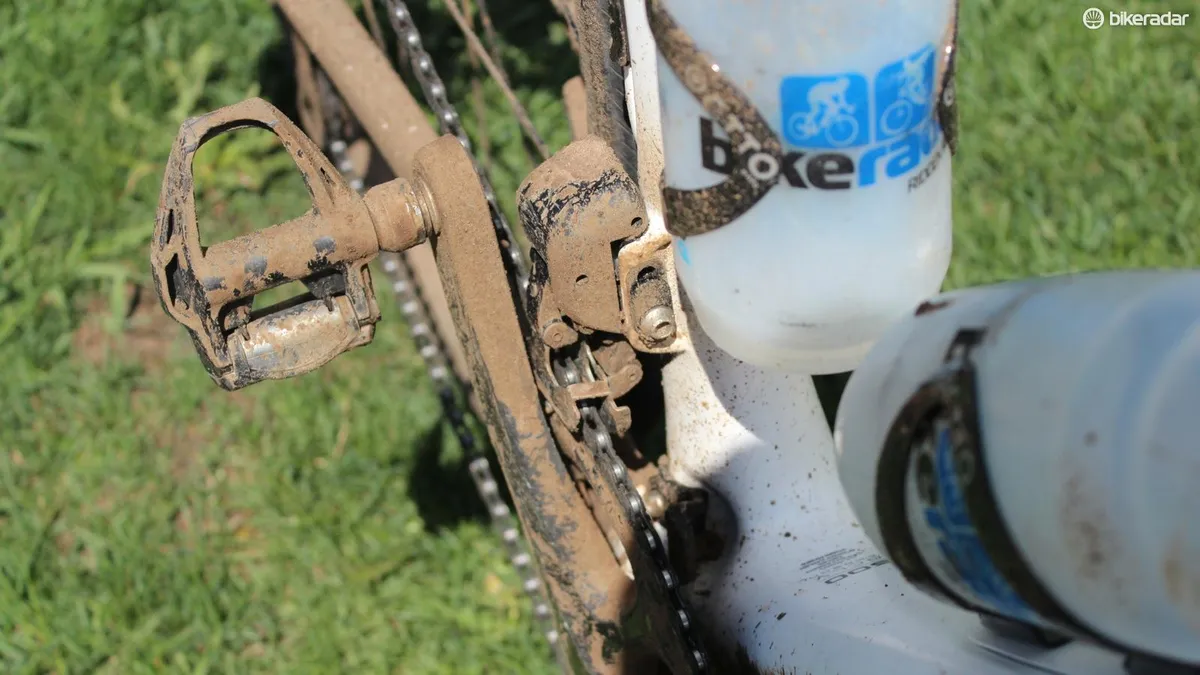
To add insult to self-inflicted injury, I had also neglected to bring a charger.
Entering the resort town of Winter Park, I debated visiting a few of the gravity mountain bike rental shops just for laughs (theirs, not mine), to ask for a Di2 charger. I opted instead for a chocolate milkshake and a leg soak in a snowmelt-fed pond.
Again? Really?
For stage 3, I rode the TCR Advanced. After a comfy day on the Domane, the TCR felt like changing out of high-mileage running shoes into track flats. Light and lively! I shifted the front derailleur and joked about my negligence in charging the Domane battery.
About 5 miles into the 100mi ride to Avon, yup, it happened again. No front shifting. Moron! That day included a few high-cadence drills (ever motorpaced behind a Mavic car in the little ring?), but also a few joyous descents (ever descended at 50mph on dirt as smooth as a baby’s butt?).
Dirt roads vary tremendously in the quality and type of the surface. Some counties treat the dirt with magnesium chloride, which smells a little funny but keeps the dirt smooth and hardpacked. This is a delight to ride on. Other Colorado counties opt for just dumping a bunch of gravel down, which, as you probably would expect, is rougher and a bit dicier to ride fast on.
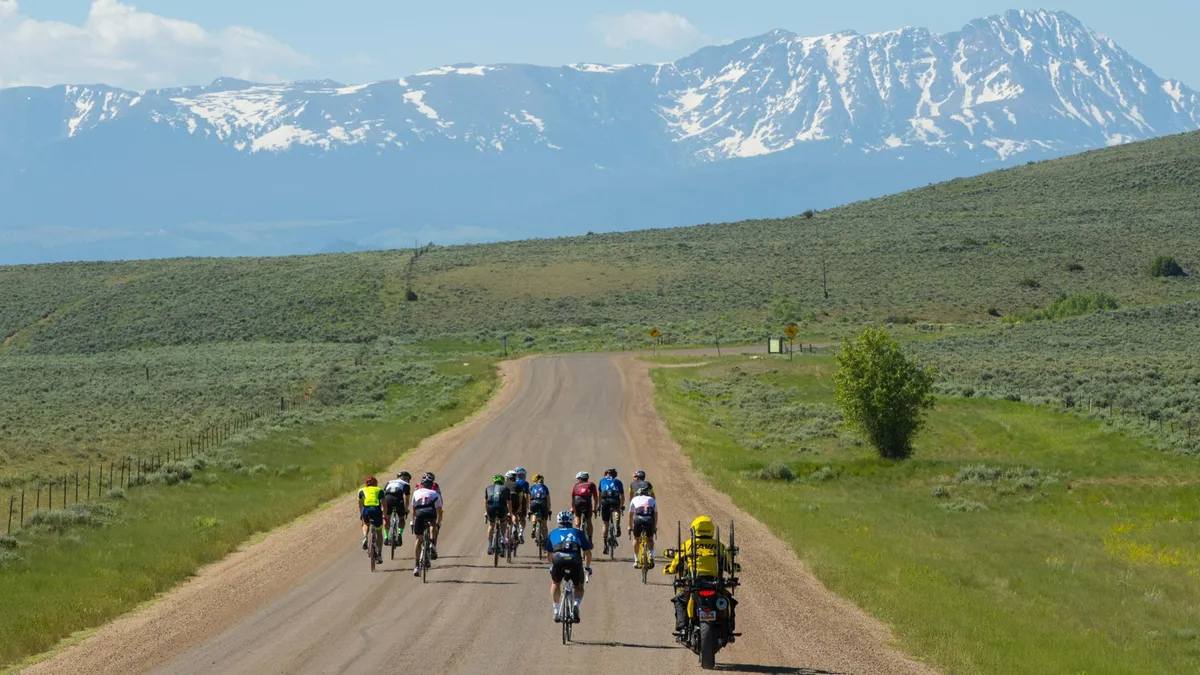
Stage 3’s dirt ran the gamut, from the aforementioned 50mph rollercoaster in to a rough stretch where I had to catch a bottle with my calf as it rattled loose. (Zipp SL cages aren’t ideal for gravel, I discovered.) In the course of a few hours, I went from thinking the 28s were total overkill to wishing I had 32s on. In short, the 28s were the happy medium.
The High Gear Cyclery in Avon saved my bacon, loaning me a Di2 charger overnight to revive the front shifting on both bikes. Thanks, guys!
As with the previous days, gear selection (intentional or otherwise) wasn’t quite as important as riding group selection. Being able to draft, joke, motivate and receive motivation from a smooth-moving group on a long ride is key. There is no two ways about it.
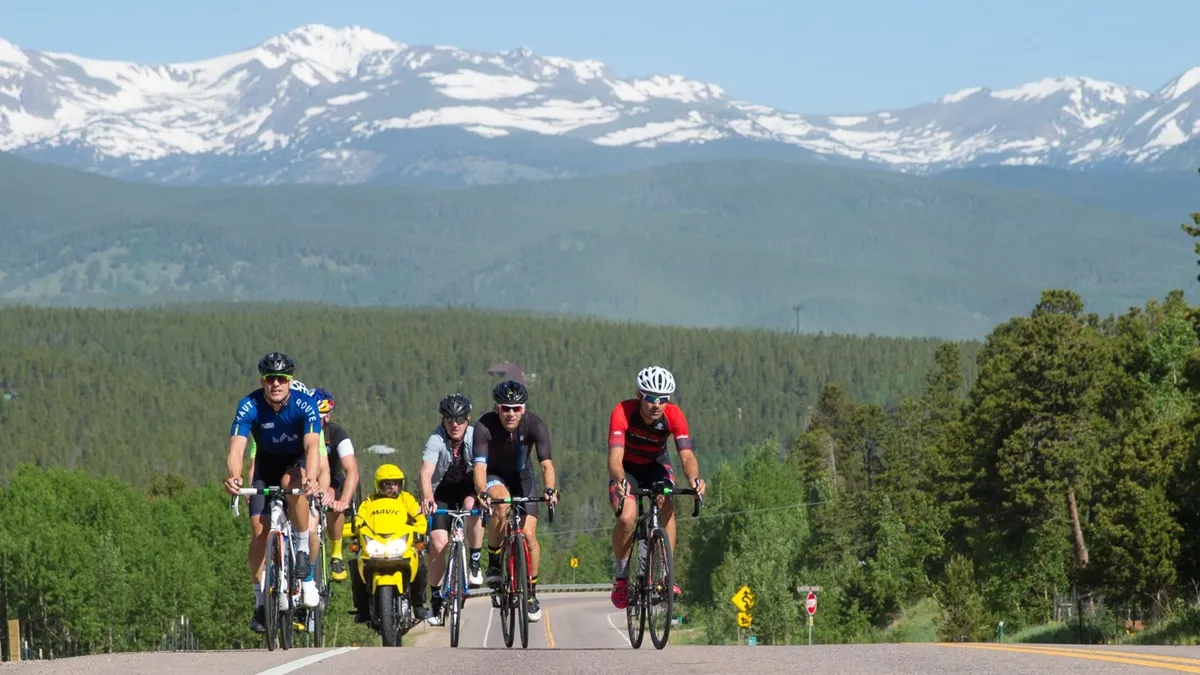
Which bike? And the important stuff
The following four days delivered more of the same: delicious high-mountain scenery, heaps of endorphin-boosting climbing and adrenalin-fueled descending, and ample servings of quiet dirt roads. I used the Trek for the two days with pitches over 20%, and the Giant for the rest.
While the hydraulic braking was nice, the bigger benefit to the disc bike was the possibility of running huge clinchers (it comes with 30mm Bontragers) and the ample clearance for mud, should the skies open like they did on stage 6 while on 18mi of dirt.
Could I do it all again but only take one bike, I’d bring the Giant, with a few modifications. While the Domane SLR is a fantastic bike — I wrote this gushy piece a few months ago, and stand by it — there is no getting around physics. Using one of AnalyticCycling’s cool calculators, I estimated that the Trek’s additional 5lbs / 2.27kg over the Giant would add 18 minutes to my time over the week.
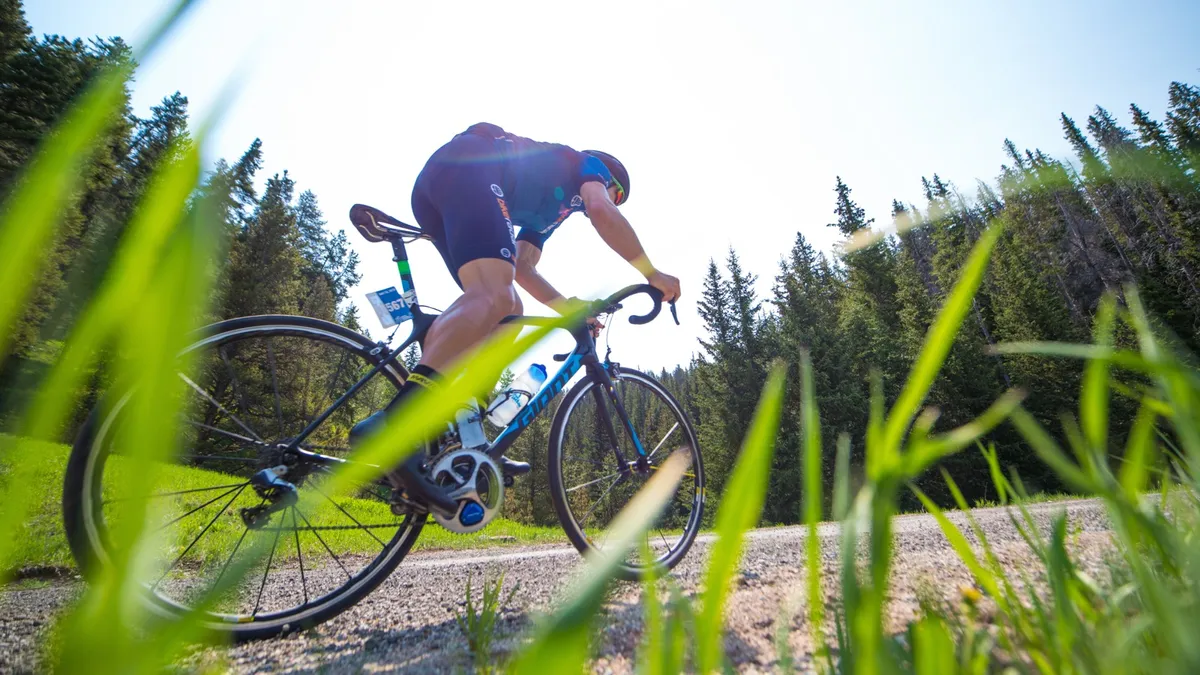
Changes? I’d put a 34 small ring on the Giant (and keep the 52t big ring), and use bottle cages with a firmer grip than the Zipp SL flyweights.
If you are more concerned with comfort than time or perhaps are nervous on descents or dirt, then the Domane SLR is an excellent choice.
If you were to tackle the Mavic Haute Route Rockies or something similar, I’d advise a few things:
- bring a pair of high-quality 25mm and a pair of 28mm clinchers; that way you can swap for the rougher stages and have back-ups
- bring a saddle you love; not like, love
- drink Skratch or something similar constantly
- find a group of similar ability and settle in; it’s much faster and much more fun in a bunch
